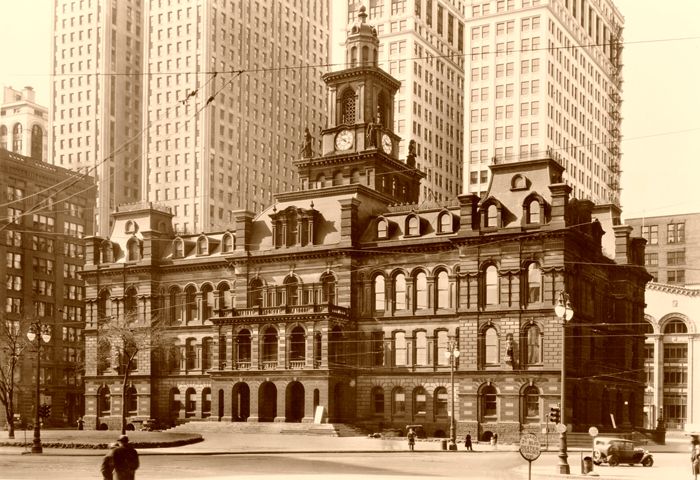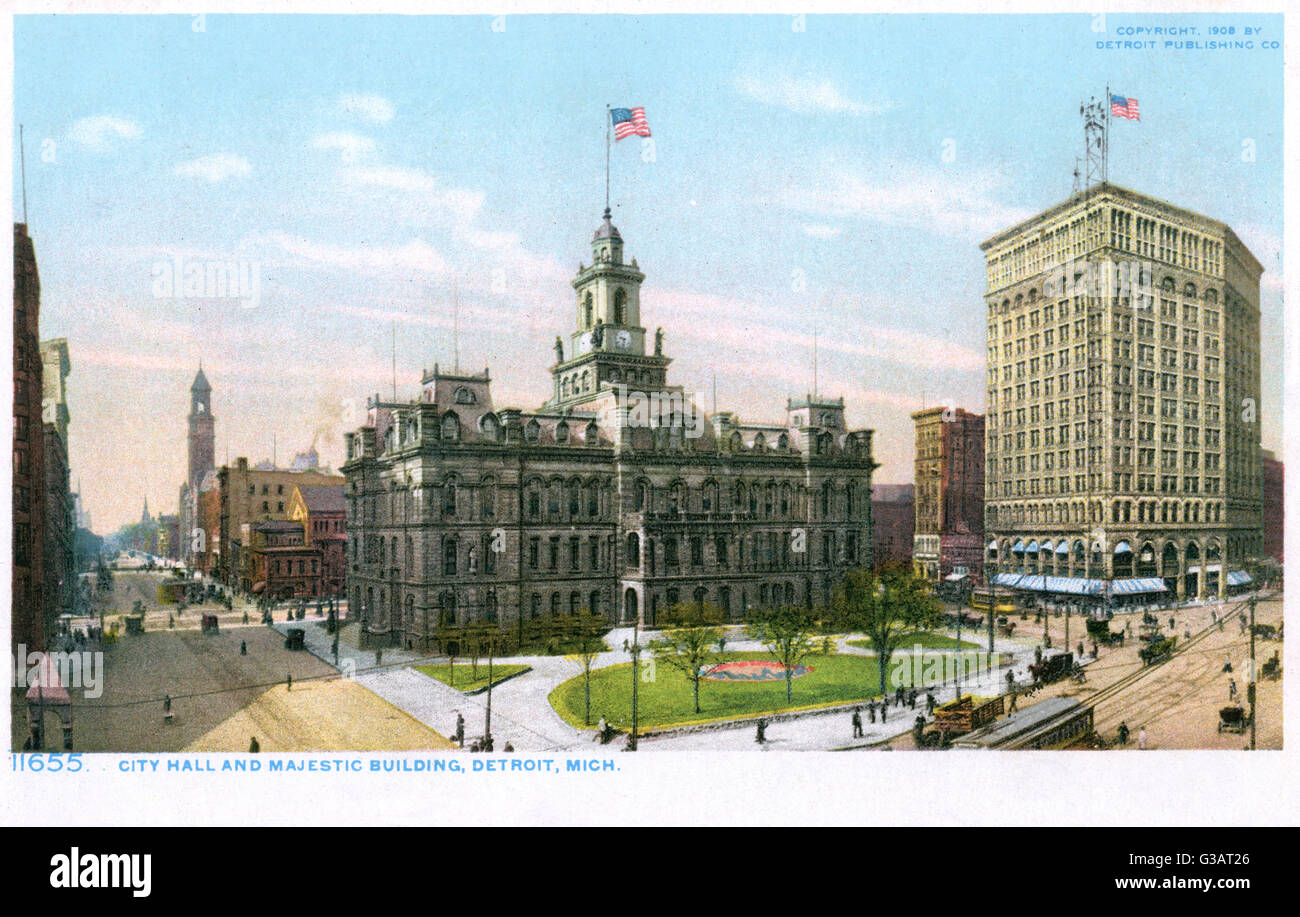
The Glass Fortress: Detroit’s Coleman A. Young Municipal Center, A Symbol of Resilience
Gleaming under the Michigan sun, the Coleman A. Young Municipal Center (CAYMC) rises from the heart of downtown Detroit, a towering sentinel of glass, steel, and white granite. It’s more than just a city hall; it’s a living monument to Detroit’s tumultuous journey, a silent witness to its soaring aspirations, its precipitous decline, and its determined, ongoing resurgence. In its very architecture, its history, and its enduring function, the CAYMC embodies the spirit of a city that has consistently defied easy categorization, a place forever reinventing itself.
Designed by the renowned architect Minoru Yamasaki – perhaps best known for his later work on the World Trade Center in New York City – in collaboration with Smith, Hinchman & Grylls, the building was completed in 1954. Initially known as the City-County Building, its construction represented a forward-looking vision for a booming, post-war Detroit. The city, then at the zenith of its automotive dominance, sought a municipal structure that reflected its power, its efficiency, and its embrace of modernity. Yamasaki’s design delivered precisely that: two elegant, 14-story towers rising from a central, two-story block, all set within a expansive, often windswept plaza.
The architectural style is quintessential International Style Modernism, characterized by clean lines, a stark aesthetic, and a strong emphasis on functionality. Yamasaki, known for his ability to imbue monumental structures with a sense of grace, utilized gleaming white Georgia marble, glass, and aluminum to create a building that, at its inception, was both imposing and aspirational. The extensive use of glass was meant to symbolize transparency and accessibility in government, an open invitation to citizens to observe their civic processes. The twin towers house city and county administrative offices, while the lower block contains council chambers, courts, and public meeting spaces. The plaza, envisioned as a vibrant public square, was designed to foster community engagement and provide a breathing space in the dense urban fabric.

However, like many ambitious urban planning projects of the mid-20th century, the reality of the CAYMC diverged from its utopian ideals. While undeniably a landmark, its modernist starkness and the sheer scale of the plaza sometimes made it feel less like a welcoming public space and more like a somewhat alienating, bureaucratic fortress. As Detroit’s fortunes began to shift in the latter half of the century, the building, once a symbol of progress, found itself increasingly viewed through a lens of skepticism and disillusionment.
Perhaps no event cemented the building’s symbolic weight more than its renaming in 1997. It became the Coleman A. Young Municipal Center, honoring Detroit’s first African American mayor, who served an unprecedented five terms from 1974 to 1994. Young was a towering, often controversial, figure who navigated the city through some of its most challenging decades – the aftermath of the 1967 rebellion, the flight of industry, and the devastating loss of population and tax base. His legacy remains fiercely debated, but his impact on the city is undeniable. Renaming the building after him was a powerful statement, a recognition of an era, and a complex political gesture that continues to resonate. For many, it represented a reclaiming of the city’s narrative, a celebration of Black political power in a city that had long struggled with racial divides. For others, it was a reminder of an era of perceived decline and a divisive figure.
Throughout its existence, the CAYMC has been the epicenter of Detroit’s governance, a constant in a city defined by change. It housed the mayoral administrations that grappled with the city’s economic downturns, the city council meetings that debated controversial policies, and the courts that heard cases reflecting the city’s social fabric. During the dark days of the late 20th and early 21st centuries, when Detroit became synonymous with urban decay and economic collapse, the CAYMC stood as a stark symbol. Its gleaming exterior, once a beacon of progress, sometimes felt like a cruel irony against the backdrop of crumbling neighborhoods and a dwindling population.
The building truly came into sharp focus during Detroit’s unprecedented municipal bankruptcy in 2013. The Coleman A. Young Municipal Center became the de facto headquarters for the historic proceedings. Within its walls, emergency managers, city officials, creditors, and legal teams hammered out the details of the largest municipal bankruptcy in U.S. history. The City Council chambers, typically a forum for local legislative debate, transformed into a stage for the city’s existential crisis. The very fate of Detroit – its pensions, its assets, its future – was being decided within this glass fortress. It was a crucible, testing the resilience of a city and the integrity of its governance.
As Detroit emerged from bankruptcy, shedding its debt and beginning its slow, often uneven, path to revitalization, the CAYMC once again found itself taking on new meaning. It now stands amidst a downtown that is demonstrably different. New businesses have moved in, residential towers are filling up, and the streets hum with a renewed energy. The building, once a solitary beacon in a struggling downtown, is now part of a vibrant, re-emerging urban core.
Today, the CAYMC continues to house the Mayor’s office, the City Council, the Wayne County Circuit Court, and numerous administrative departments. It remains the beating heart of local governance, a place where the daily work of running a complex city unfolds. While its modernist aesthetic might feel dated to some, and its plaza still struggles to draw consistent crowds, the building’s symbolism endures. It’s a testament to the idea that even in the face of profound adversity, the institutions of democracy persist.
For those who work within its walls, and for the citizens who pass by it daily, the CAYMC represents different things. For some, it’s a cold, impersonal bureaucracy. For others, it’s a symbol of hope, a tangible representation of a city that refused to die. Its very permanence, its stoic endurance through decades of change, speaks volumes. It reminds Detroiters that despite the headlines, the crises, and the comebacks, the business of the city, the daily grind of governance and public service, continues.
The Coleman A. Young Municipal Center is more than just a collection of offices; it’s a character in Detroit’s epic story. It has seen the city at its peak, witnessed its nadir, and now stands firm as Detroit writes its next chapter. As the city continues its journey of rediscovery and renewal, this glass fortress will remain, reflecting not just the sky above, but the enduring, complex, and unyielding spirit of Detroit itself. It is a monument to resilience, a reminder that even when the foundations shake, the heart of governance, and the spirit of a city, can find a way to stand tall.



